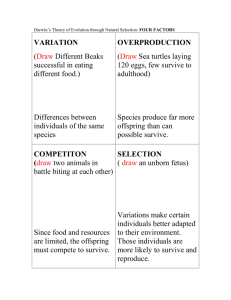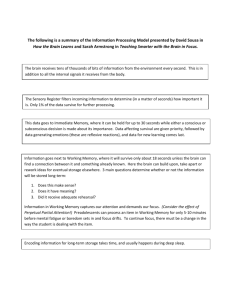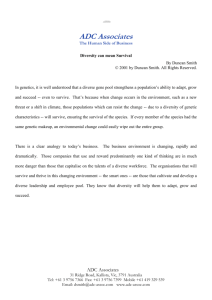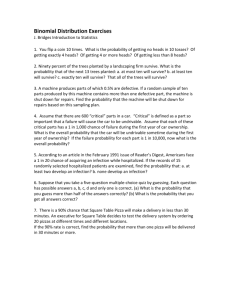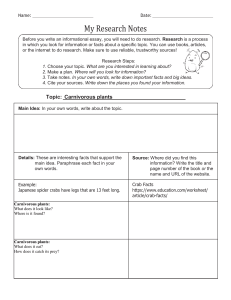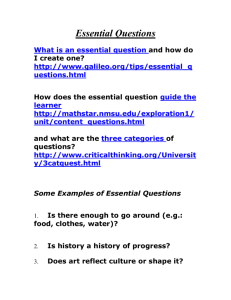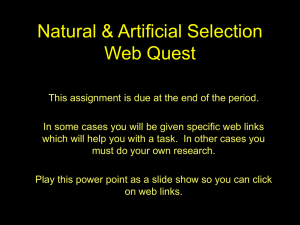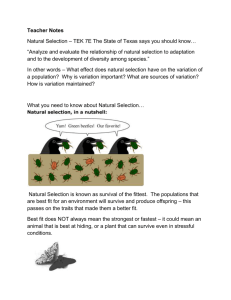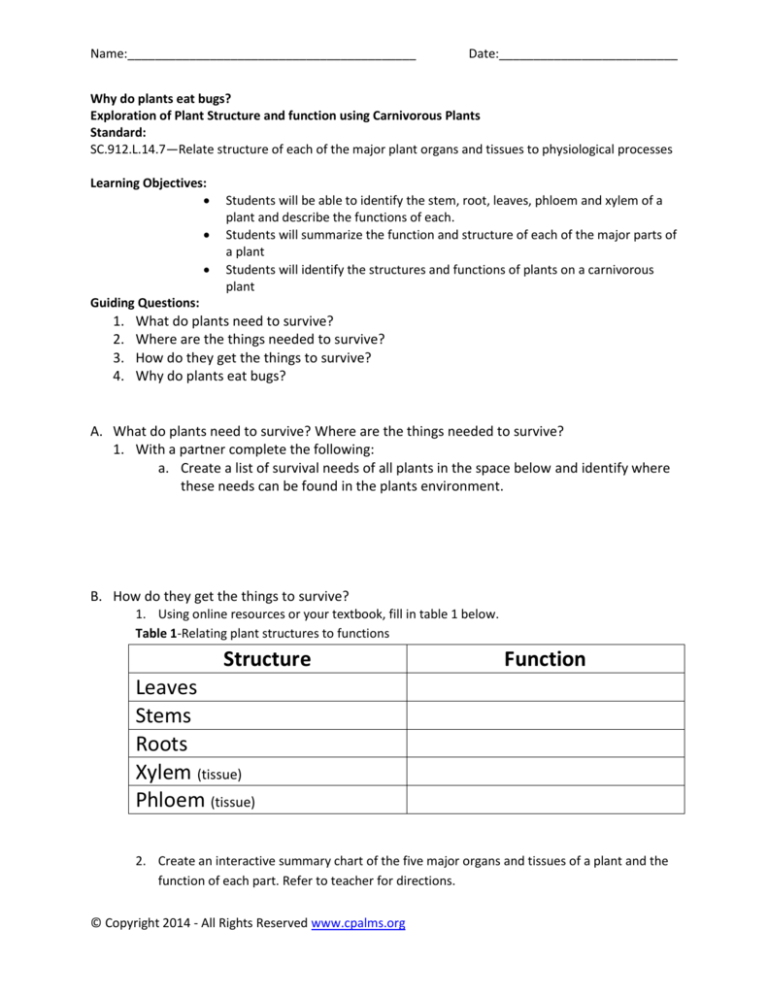
Name:__________________________________________
Date:__________________________
Why do plants eat bugs?
Exploration of Plant Structure and function using Carnivorous Plants
Standard:
SC.912.L.14.7—Relate structure of each of the major plant organs and tissues to physiological processes
Learning Objectives:
Students will be able to identify the stem, root, leaves, phloem and xylem of a
plant and describe the functions of each.
Students will summarize the function and structure of each of the major parts of
a plant
Students will identify the structures and functions of plants on a carnivorous
plant
Guiding Questions:
1.
2.
3.
4.
What do plants need to survive?
Where are the things needed to survive?
How do they get the things to survive?
Why do plants eat bugs?
A. What do plants need to survive? Where are the things needed to survive?
1. With a partner complete the following:
a. Create a list of survival needs of all plants in the space below and identify where
these needs can be found in the plants environment.
B. How do they get the things to survive?
1. Using online resources or your textbook, fill in table 1 below.
Table 1-Relating plant structures to functions
Structure
Function
Leaves
Stems
Roots
Xylem (tissue)
Phloem (tissue)
2. Create an interactive summary chart of the five major organs and tissues of a plant and the
function of each part. Refer to teacher for directions.
© Copyright 2014 - All Rights Reserved www.cpalms.org
Name:__________________________________________
Date:__________________________
C. Why do plants eat bugs?
Work with a partner to research an assigned common carnivorous plant of Florida. Complete the
information below based on your research.
1. Common Name:
2. Scientific Name (include the genus and species, capitalize genus and underline both the genus and species):
3. Draw a colored illustration of your entire pitcher plant below. Label the common structures of
plants on your drawing: leaves, stem, roots.
4. Complete the four-square summary worksheet for your assigned pitcher plant.
© Copyright 2014 - All Rights Reserved www.cpalms.org

